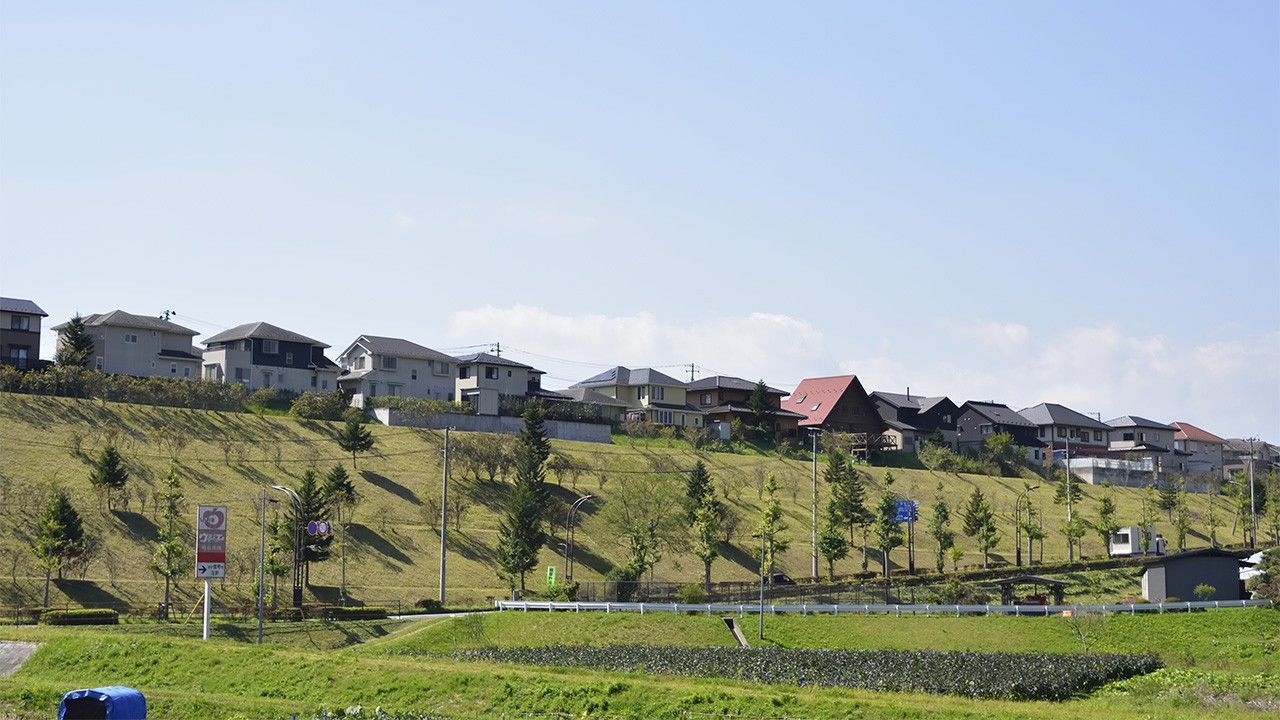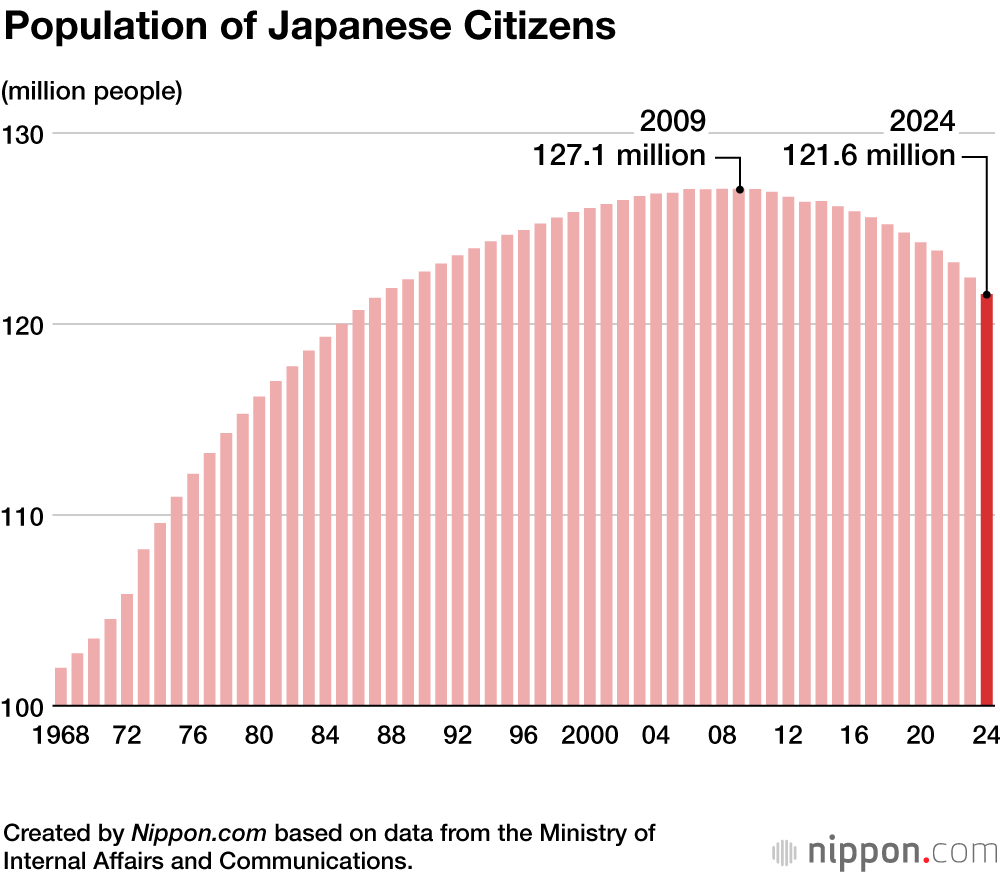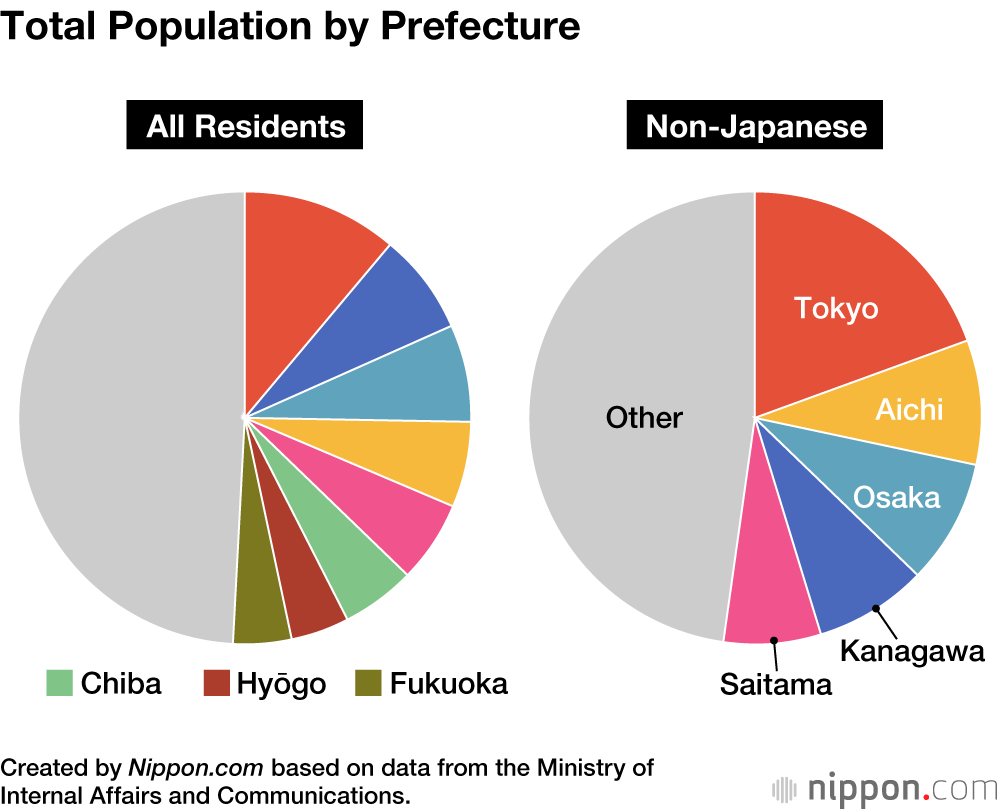
Non-Japanese Residents in Japan Top 3 Million for First Time
Politics Society Family Economy- English
- 日本語
- 简体字
- 繁體字
- Français
- Español
- العربية
- Русский
Japan’s population was 124,885,175, as of January 1, 2024, after a 0.42% year-on-year decrease, according to a demographic survey published by the Ministry of Internal Affairs and Communications.
The number of Japanese citizens was 121,561,801, down 861,237 or 0.70% year on year. This was a considerably greater decrease than 800,000 the previous year, reflecting an accelerated population decline. Since 2009, the number of Japanese citizens has fallen for 15 consecutive years. While the Japanese population in Tokyo crept up by 3,933 or 0.03%, for the first rise in three years, it fell in all 46 other prefectures. The largest decreases were in the north of Tōhoku: 1.83% in Akita, 1.72% in Aomori, and 1.61% in Iwate.
The number of Japanese born in 2023 totaled 729,637, marking a record low for the eighth consecutive year. The natural population decline, calculated by subtracting births from deaths, increased to 850,360, rising for the sixteenth straight year.
Meanwhile, there were 3,323,374 non-Japanese residents, a year-on-year increase of 329,535 or 11.0%, due to factors including the relaxation of the entry restrictions that had been in place during the COVID-19 pandemic. This was the highest total since statistics were first compiled in 2013.
The prefecture with the highest population (both Japanese and non-Japanese) was Tokyo with 13,911,902 residents, followed by Kanagawa at 9,208,688, and Osaka at 8,775,708. The least populated prefecture was Tottori, with just 540,207 residents or one twenty-fifth the number of Tokyo.
The total population of the three major metropolitan areas centered on Tokyo, Osaka, and Nagoya was 66,041,511, declining for the fourth consecutive year, but still representing 52.9% of the total population. The concentration of foreign residents in metropolitan areas is even more pronounced, with 52.2% of the total population living in the prefectures of Tokyo, Aichi, Osaka, Kanagawa, and Saitama.
Prefectures with the Highest and Lowest Populations (All Residents)
| Tokyo | 13,911,902 | Tottori | 540,207 |
| Kanagawa | 9,208,688 | Shimane | 650,624 |
| Osaka | 8,775,708 | Kōchi | 675,623 |
| Aichi | 7,500,882 | Tokushima | 710,012 |
| Saitama | 7,378,639 | Fukui | 752,390 |
| Chiba | 6,310,158 | Saga | 801,051 |
| Hyōgo | 5,426,863 | Yamanashi | 806,369 |
| Fukuoka | 5,095,379 | Wakayama | 913,297 |
| Hokkaidō | 5,093,983 | Akita | 924,620 |
| Shizuoka | 3,606,469 | Kagawa | 948,585 |
Created by Nippon.com based on data from the Ministry of Internal Affairs and Communications.
Prefectures with the Highest and Lowest Populations (Non-Japanese)
| Tokyo | 647,416 | Akita | 5,222 |
| Aichi | 301,924 | Tottori | 5,509 |
| Osaka | 296,579 | Kōchi | 5,966 |
| Kanagawa | 260,163 | Aomori | 7,598 |
| Saitama | 230,234 | Tokushima | 7,797 |
| Chiba | 199,833 | Wakayama | 8,930 |
| Hyōgo | 129,432 | Yamagata | 9,124 |
| Shizuoka | 111,906 | Shimane | 9,587 |
| Fukuoka | 98,130 | Miyazaki | 9,592 |
| Ibaraki | 89,517 | Saga | 9,601 |
Created by Nippon.com based on data from the Ministry of Internal Affairs and Communications.
(Originally published in Japanese. Banner photo © Pixta.)


